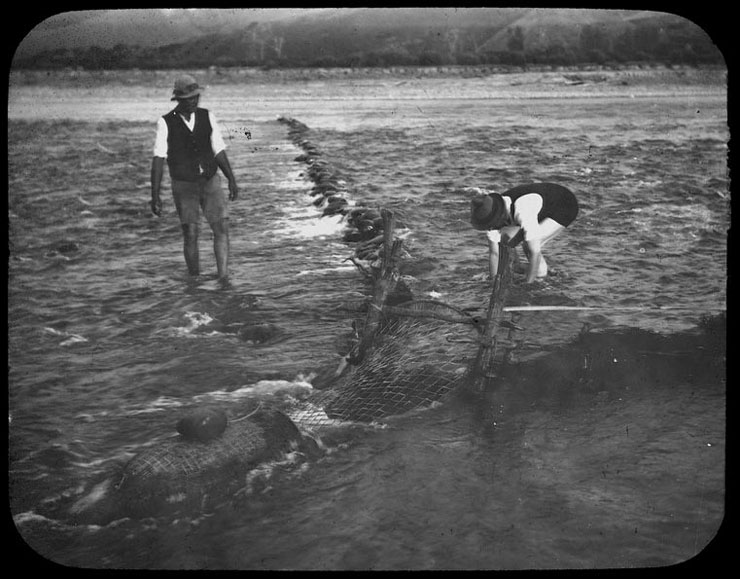 'Fishing for upokororo', 1922
'Fishing for upokororo', 1922
TLF ID R4204
This is a black-and-white photograph of two Mäori men at work with two hïnaki (fish traps) capturing upokororo (grayling, 'Prototroctes oxyrhynchus') on the Waipu River on the east coast of the North Island in 1922. The photograph shows a low dam that has been built across the stream to divert its flow and direct the fish into the hïnaki. The front trap is tied to a wooden frame while the back trap is weighed down with a small boulder. The photograph is one of four taken by James McDonald and the negative measures 8.0 cm x 8.0 cm.
